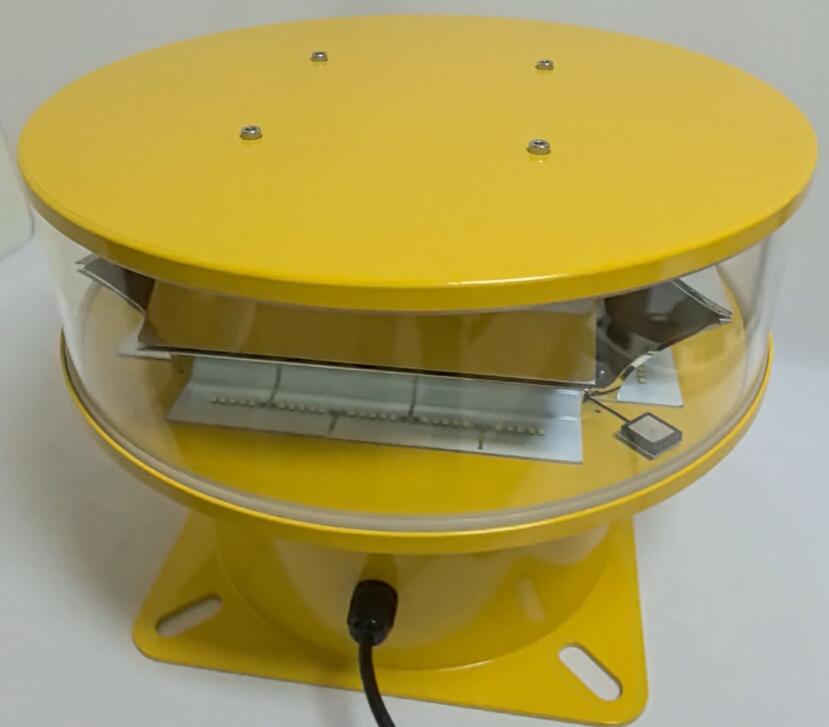In the complex and dynamic environment of aviation, where the safety of every flight is of utmost importance, tower aircraft warning lights stand as silent sentinels. These lights are far more than mere beacons; they are the crucial elements that bridge the gap between the stationary towers on the ground and the fast - moving aircraft in the sky.
Towers, whether they are for telecommunication, broadcasting, or other purposes, can be extremely hazardous to aircraft. With the increasing density of air traffic and the proliferation of tall structures, the risk of mid - air collisions with these towers has become a significant concern. Tower aircraft warning lights are specifically engineered to mitigate this risk. They are designed to make the towers visible from great distances and under various weather conditions.
The construction of these warning lights is based on meticulous engineering. Typically, they are composed of high - intensity bulbs that are capable of emitting bright and focused light. The choice of color is not arbitrary. Red is the dominant color as it has the highest visibility in the visual spectrum during flight conditions. The red light cuts through the darkness of the night sky and penetrates fog, mist, and other low - visibility scenarios with remarkable efficiency. In some advanced systems, there may also be white strobe lights that enhance the overall visibility of the tower. These strobe lights have a unique flashing pattern that further catches the attention of pilots.

The placement of tower aircraft warning lights on the tower is a strategic decision. Lights are usually positioned at the top of the tower, which is the most critical area as it represents the highest point that an aircraft could potentially collide with. However, depending on the height and structure of the tower, additional lights may be installed at intermediate levels. This multi - level lighting approach ensures that the entire tower is well - marked and visible from different angles and altitudes. For extremely tall towers, lights may also be placed at the base to provide a clear indication of the tower's footprint.
The performance of tower aircraft warning lights is subject to rigorous standards. Aviation regulatory bodies have established detailed requirements regarding the light intensity, beam angle, and flashing frequency. The light intensity must be sufficient to be visible within a specified range, which can range from several miles to tens of miles depending on the tower's location and the surrounding airspace. The beam angle is carefully calibrated to ensure that the light is distributed evenly in the directions where aircraft are most likely to approach. The flashing frequency of the lights is also standardized to avoid any confusion with other light sources in the area.
| tower aircraft warning lights | 45RT |
Maintenance of these warning lights is a continuous and labor - intensive process. Tower owners and operators are responsible for conducting regular inspections to ensure that all lights are functioning properly. This includes checking for burned - out bulbs, damaged wiring, and any issues with the power supply. In addition to routine inspections, there are also backup systems in place to handle power failures. These backup systems, such as uninterruptible power supplies (UPS) and backup generators, are essential to ensure that the warning lights remain operational during emergencies.
In the modern era, technological advancements have further improved the effectiveness of tower aircraft warning lights. The use of light - emitting diode (LED) technology has revolutionized the industry. LEDs offer several advantages over traditional lighting sources. They are more energy - efficient, which reduces the operational costs of running the warning lights. They also have a longer lifespan, which means less frequent replacements and maintenance. Additionally, LEDs can be programmed to have specific flashing patterns and intensities, providing more flexibility in the design of the warning light systems.
Tower aircraft warning lights are an integral part of the aviation safety net. They play a vital role in preventing accidents and ensuring the safety of both passengers and crew on board aircraft. Their proper installation, operation, and maintenance are essential for the smooth functioning of the airspace around tall towers. As the aviation industry continues to grow and evolve, the importance of these warning lights will only increase, and continuous innovation in their design and technology will be necessary to keep pace with the changing demands of air safety.